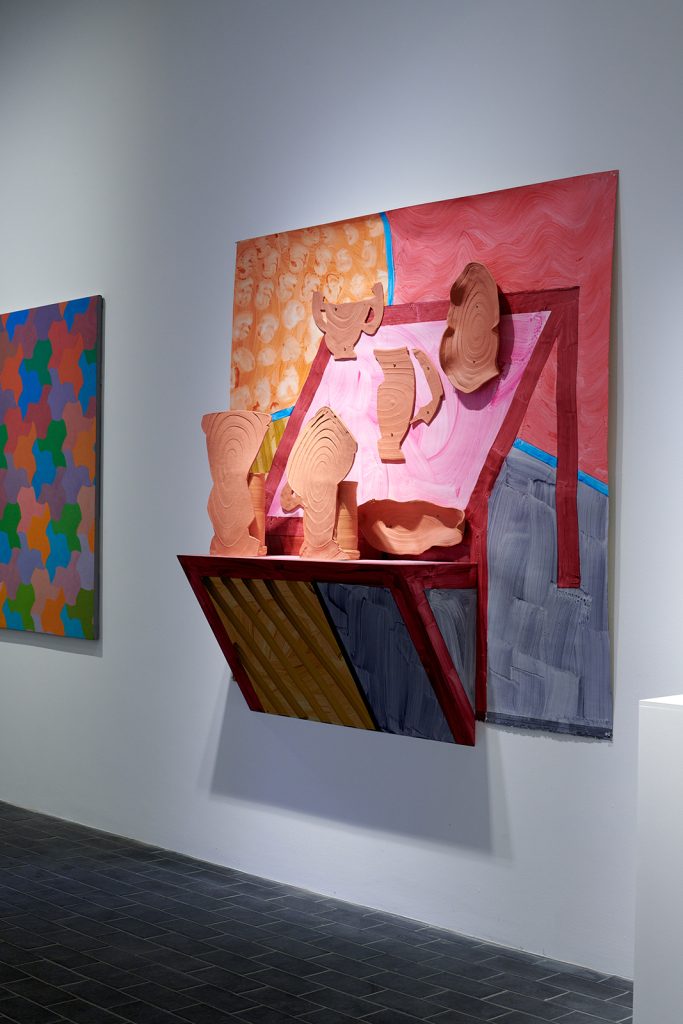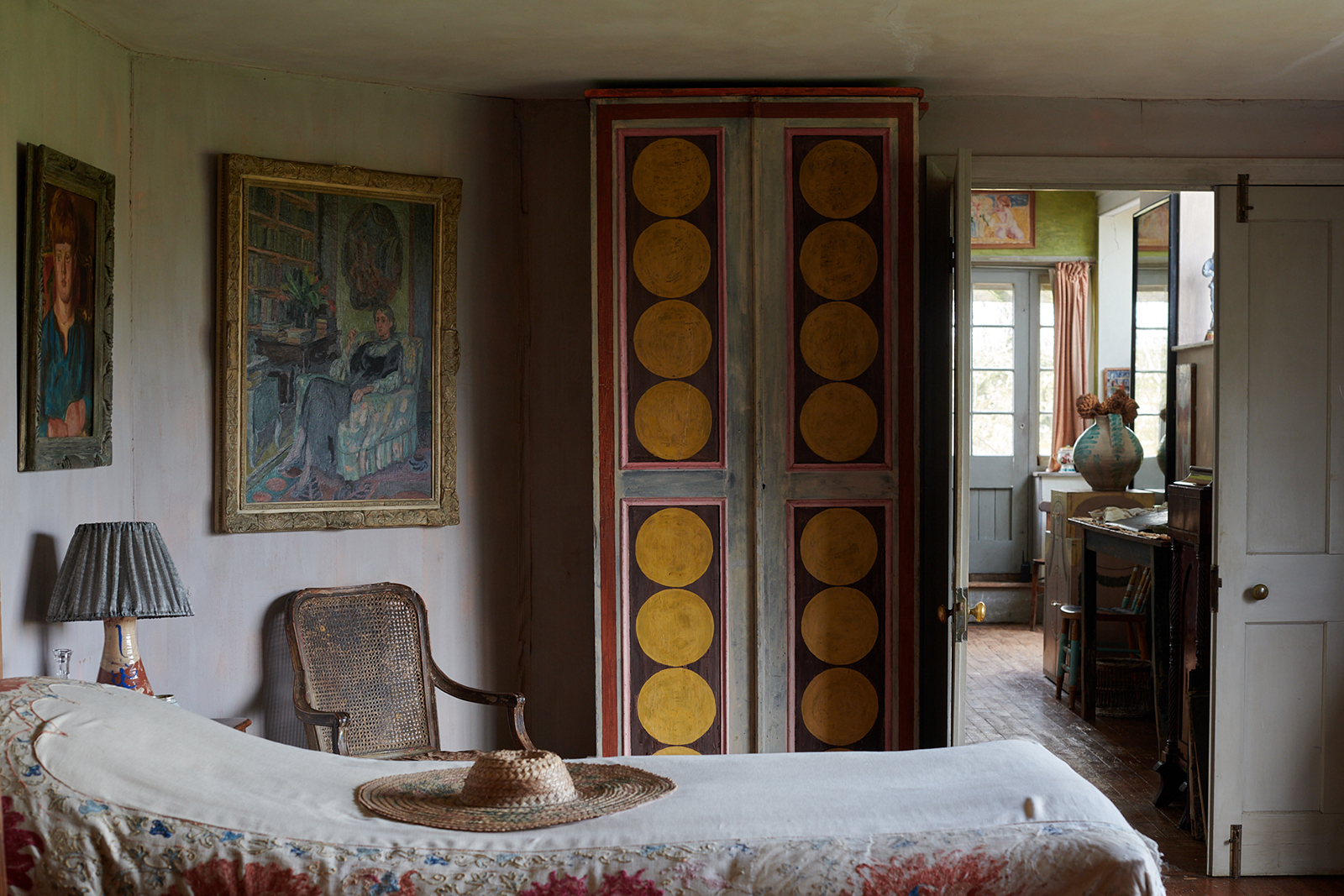It’s not often that the artistic landscape of Sussex comes into proximity with its counterpart in Tuscany: a meeting of 20th-century free-thinking with the humanism of Renaissance Italy.
But indeed, Tuscany comes to Sussex (via New York) with a new exhibition of work by American artist-couple Betty & George Woodman at Charleston Farmhouse – the home of artists Vanessa Bell and her friend Duncan Grant and the oft-country escape of the Bloomsbury Group, which included Bell’s sister Virginia Woolf and art critic Roger Fry. ‘A romantic house buried deep down in the highest & most wild downs I have ever seen’, reflected artist Dora Carrington on her visit to Charleston in 1916, the year Bell and Grant moved in.
Roomy but ramshackle, Charleston soon became both studio and canvas for Bell and Grant, who festooned walls and doors, fireplaces and furnishings with their free-wheeling painting and integrated fabrics and ceramics by the Omega Workshops (the firm founded by Roger Fry). The flint house and its walled garden were rarely quiet of guests or gossip.
Over a century later, Charleston’s presentation of the Woodmans’ work (in one of two contemporary gallery spaces) is a testament to another artistic pair, influenced chiefly by over five decades of living and working in Antella, Tuscany. Visiting the region first in 1959, the Woodmans eventually settled in their own farmhouse, close to Florence, in 1968 – returning with their children every summer until the 1990s. It was ‘an artist residency for two’, said George – a sanctuary where ‘the birds come to the table and have breakfast with us’, said Betty and where each morning she would return from the garden with more cut flowers than she could carry.

Photography: Louise Long

Photography: Louise Long

Photography: Louise Long

Photography: Louise Long

Photography: Louise Long

Photography: Louise Long

Photography: Louise Long

Photography: Louise Long

Photography: Louise Long

Photography: Louise Long

Photography: Louise Long

Photography: Louise Long

Photography: Louise Long
Like Charleston, Antella and its surrounds yielded unfettered creative experimentation and dialogue for the Woodmans. Betty’s ceramic practice shifted from the functional to the increasingly conceptual, drawing on the generous sculpturalism of Italian pottery for her Etruscan Vases works (1965-66) and – also on show – for her Pillow Pitchers (1970s-2000s), imbued too with the tradition of Chinese ceramic pillows, gloriously unwieldy in Betty’s reinterpretation. It was a time of ‘broadening my understanding of what clay could be’, said Betty, an early foretelling of her radical ceramic and painting assemblages, such as Kitchen Table (2014), on the show: a protruding trompe l’oeil tabletop inhabited by spliced clay vessels.
For George, meanwhile, Antella prompted a diversion from his signature canvases of tessellating colour towards paintings inspired by 13th-century floor mosaics (such as Piazza San Francesco di Paola, 1965, on show). And from the 1980s, towards black-and-white photography of nudes, set amongst classical sculpture and architecture. George recounted travelling around ‘breathlessly’ in pursuit of the inspiration of Tuscany and beyond. Investigations into perspective, pattern and colour permeate the couple’s parallel practices during this time. Low Balustrade Screen (1981) reveals a softer geometry and extension of canvas into architecture, a move conversely interpreted by Betty in Balustrade Relief Vase (2000), in which wriggling fragments of clay are co-opted for the wall.
But for all the nourishment of Italy, perhaps the couple’s most remarkable discovery at Antella was the potential of creative communion. ‘Looking at things together, there is a dialogue between what we’re seeing, which makes things much richer’, George said. Just as the community encircling Charleston had discovered half a century earlier, there is infinite possibility in collective creativity.
Betty Woodman and George Woodman runs until 10 September 2023 at Charleston





Read next: Gabriel Moses inverts the gallery archetype with his ground-breaking show ‘Regina’
Ron Gilad plays with perception at Milan show, ‘Enlightenment’























